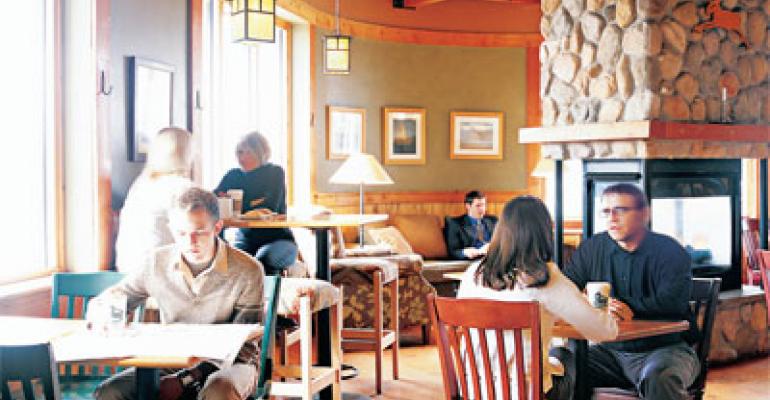A restaurant’s decor and design often are the unnoticed yet influential ingredients crucial to a menu’s success. Following are some environmental elements born of “inside the box” thinking that brands say enhance the appeal of their menu offerings.
Connectivity
Saed Mohseni, chief executive of Bravo Brio Restaurant Group, said his upscale-casual restaurants added Wi-Fi to attract private parties and banquets, but customers are beginning to expect that feature as the norm, as they do now with once-rare perks like curbside delivery and online ordering.
“Wi-Fi is just one more step,” Mohseni said. “More people are connected … and at the same time, dining out is what they’ve always done. Combine it, and you get one more opportunity out of a guest that wasn’t going to be there.”
Alfredo Martel, senior vice president of marketing at Caribou Coffee, said Wi-Fi has been a fixture in its coffeehouses from day one, so now the brand differentiates itself by making other parts of the store more interactive through such offerings as digital community boards or communal tables where guests can plug in their laptops.
“When you have groups of people that want to collaborate, that’s where the environment facilitates them and their productivity,” Martel said.
Freshness cues
Low-tech displays also go a long way, Martel said, pointing to the ubiquitous scent of coffee or the tea displays that Caribou puts near the point of sale and on the tables to promote its new tea platform.
“You can create an interaction that’s more audiovisual,” Martel said. “It’s part of any good merchandising strategy.”
Bravo Brio also uses freshness cues to trigger customers’ senses when they arrive, hopefully priming them to explore the brand’s menu.
“We have a high-volume restaurant, so when you walk in, the aromas of wood-burning pizza ovens and garlic are there,” Mohseni said. “The exhibition kitchen gives us that opportunity, and since guests see the production line, there’s more trust that the food they order meets what they’re hoping it would be.”
Dessert trays also help nudge customers by putting sweet menu items, often meant to be shared, in front of their eyes.
Eclectic architecture
Variety in seating also enables different menu sections to shine, Mohseni said, citing sales of entrée salads on the patio, appetizers at the bar and steaks in the dining room.
“Every environment within the restaurant dictates what you might order,” he said, “and each one allows you to do something different. For us, the trick is making sure the seating is a combination of booths and open seating and that we have exhibition kitchens. [And] we wouldn’t build a restaurant without a terrace.”
While Caribou hopes to one day add efficient drive-thrus for throughput, Martel said, the concept also will balance speed of service with diverse seating arrangements and more natural touches, such as textured wood furniture and burlap-upholstered ottomans.
“The duality of the challenge is that the guest that wants convenience and speed won’t necessarily care about a community table, but when they need one, they know we have it,” Martel said. “It’s about need states. For those guests who want to unwind, our environment will deliver on that in spades.”

